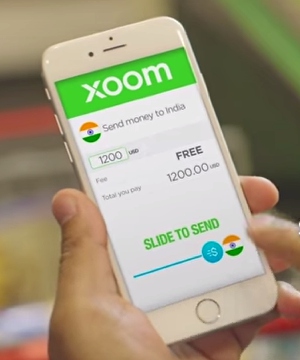Need to send money to someone in another country? Now you can use your mobile phone, just as more and more people are doing. International mobile money transfers — including mobile airtime top ups — will exceed $25 billion by 2018. That’s a whopping 67 percent increase from around $15 billion last year, in 2015.
That’s according to Juniper Research, which reports a significant surge in international remittance (payment transfer) activity in the past two years. As more people around the world become accustomed to using mobile devices and mobile payment services, expect even more international mobile money transfers. Airtime top-ups especially, are increasing in all regions of the globe, says Juniper.
Digital disruption drives mobile money transfers
 The increase is fueled in part by new and growing mobile remittance services, such as PayPal-owned Xoom and WorldRemit. Xoom was acquired by PayPal / eBay in July 2015, and this year is expanding to at least 13 new countries. Because Xoom and other new remittance providers are relatively small and focused on only digital or mobile transactions, it’s easier for them to enter and compete in new markets than it is for traditional money transfer providers.
The increase is fueled in part by new and growing mobile remittance services, such as PayPal-owned Xoom and WorldRemit. Xoom was acquired by PayPal / eBay in July 2015, and this year is expanding to at least 13 new countries. Because Xoom and other new remittance providers are relatively small and focused on only digital or mobile transactions, it’s easier for them to enter and compete in new markets than it is for traditional money transfer providers.
Long dominated by Western Union and MoneyGram, the international money transfer arena “is becoming increasingly competitive with these new remittance providers offering markedly lower prices,” notes Juniper Research author Nitin Bhas. As an example, he cites London-based start-up TransferWise, which offers extremely low fees (0.5%) for higher value ($295+) mobile money transfers.
Juniper’s Bhas predicts that international mobile money transfers will also impact informal money transfer channels such as the ‘grey remittance’ market, which is primarily cash transactions. This is because the cost of mobile remittances is usually lower than grey market service providers, mobile transactions are safer, and there is a digital record of each transaction.
Airtime top-ups surge, too
While international cash remittance growth has so far slowed, transaction volumes have surged for mobile airtime top-ups, which account for most new remittance services in many markets.
Airtime top-up services are very appealing to entrepreneurs for a number of reasons: a money licence is not required, airtime top-ups are easy to provide, there’s tight control over how the remittance is used, and there’s a need in these markets for basic peer-to-peer money flow.
Compared to international remittances, international airtime transfers also fetch very high commission fees. But high fees won’t scare away users — Juniper predicts that the number of mobile international airtime top up transactions will hit half a billion by 2018.
You can download Juniper’s whitepaper “Disrupting International Remittance”, which has further details of the full report “Digital Money Transfer & Remittances: Domestic & International Markets 2016-2021”.
.





